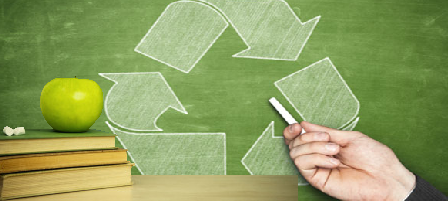As people prepare to return to school, large sums of money are spent on environmentally destructive products. According to the National Retail Federation, the back to school spend is expected to be more than $26 billion in 2014.
In addition to minimizing purchases, there are a wide range of more responsible products available to consumers. Here are ten back to school tips that can save money, reduce energy usage and minimize environmental impacts.
1. Do your back to school buying research. Investigate brands to source those that are the most environmentally inert.
2. Rather than buying new school supplies reuse items which you already have. This can include notebooks that still have unused pages, pens, binders and backpacks.
3. When you are buying new, try to avoid plastic and use products made from recycled material with little or no packaging.
4. When buying paper use 100 percent post-consumer recycled products and avoid the whitest paper as this indicates that it was treated with environmentally harmful (and unnecessary) chlorine bleach.
5. Keep new clothes purchases to a minimum by reusing existing clothing. When you do buy new clothes try to make sure that you are buying items which are less toxic for you and the environment (See Greenpeace's list of environmentally responsible clothing manufacturers).
6. When buying fabrics (clothes, backpacks etc) made out of hemp, bamboo, or even flax. Avoid nylon.
7. Minimize waste by avoiding such things as paper bags. Most importantly reduce your use of plastic baggies. The best choice is reusable lunch containers made of fabric or metal and reusable beverage containers rather than single use bottled products.
8. Reduce the distances you travel to procure your back to school products.
9. Try to buy products that are manufactured locally as opposed to those that are made very far away (ie overseas).
10. Keep purchasing to a minimum by buying only what you need. A good way to help do this is to make a list and stick to it. This reduces the tendency to impulse buy things you do not really need.
Make sure to see the article titled, "Comprehensive Green School Information and Resources."
It contains links to over 200 articles covering everything you need to know about sustainable academics, student's eco-initiatives, green school buildings, and college rankings as well as a wide range of related information and resources.
- Blogger Comment
- Facebook Comment
Subscribe to:
Post Comments
(
Atom
)

0 comments:
Post a Comment